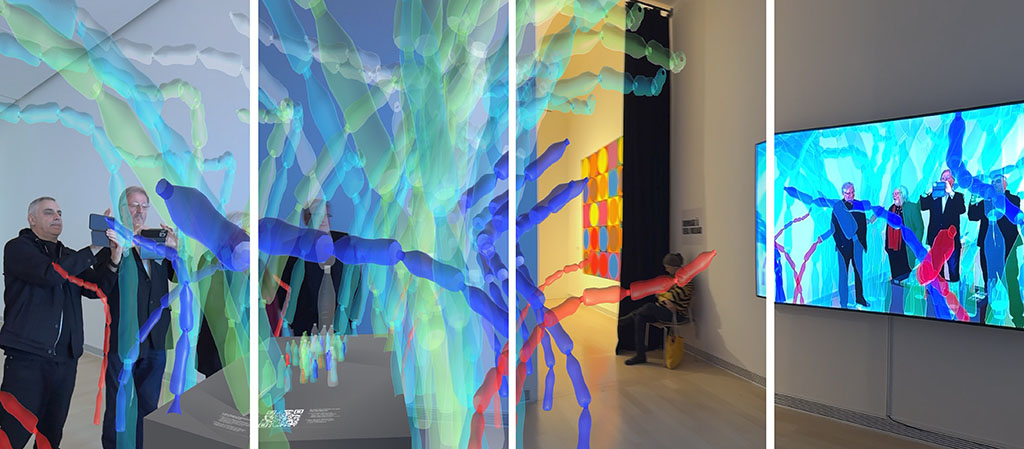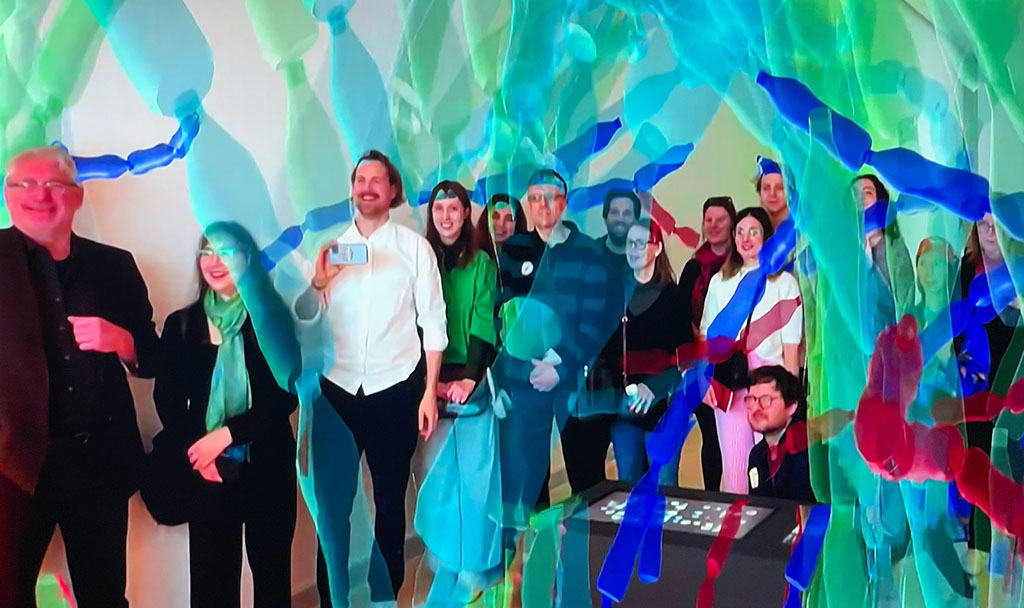Vera Plastica
Generative augmented reality installation by Tamiko Thiel and /p, 2024Commissioned by BROICH Digital Art Museum via DAM Projects Berlin
World premiere: February 2024 in "À la Recherche de Vera Molnar,"
Ludwig Museum Budapest, 10 February - 14 April, 2024. "Vera Plastica" is a generative augmented reality (AR) installation inspired by Vera Molnar's generative grid compositions, in which she uses algorithms to determine random variations in the geometry and color of a thematic form, which progress in rows and columns to fill the image space. As artists whose works are primarily spatial and time-based, however, we have extended her process into the 3rd and 4th dimensions of space and time.

Vera Plastica show in 3D AR, 2D grid monitor, 3D livestream monitor.

Budapest XR group with Vera Plastica, recorded off 3D livestream monitor.
"Vera Plastica" is thus a dialogue between a 2D, top down orthographic view of the artwork, shown on a horizontal monitor lying face upwards, and a 3D spatial, perspective view of the entire AR installation, visible in a very large wall monitor and in visitors' own smartphones. True to our own thematic concerns, our basic unit is not a square or circle or letter, as is typical for Vera Molnar's work, but a (virtual) plastic bottle, symbol of the underwater plastic pollution that is creating a Plastocene environment for all life underwater.
The installation is also a commentary on how our viewpoint can shape our perceptions. This play between 2D and higher dimensions is inspired by Edwinn Abbott Abbott's 1884 novella "Flatland: a Romance of Many Dimensions," in which Abbott describes the impossibility for a 2 dimensional creature to perceive a form in 3 dimensions. In our 3D perspective AR view of the exhibition space, the visitor realizes that the colorful circle patterns they see on the monitor are simply a top down view of the „sprouts“ of a huge „plastokelp forest“ that expand out from the black box of the horizontal monitor to engulf all visitors in the galley space.